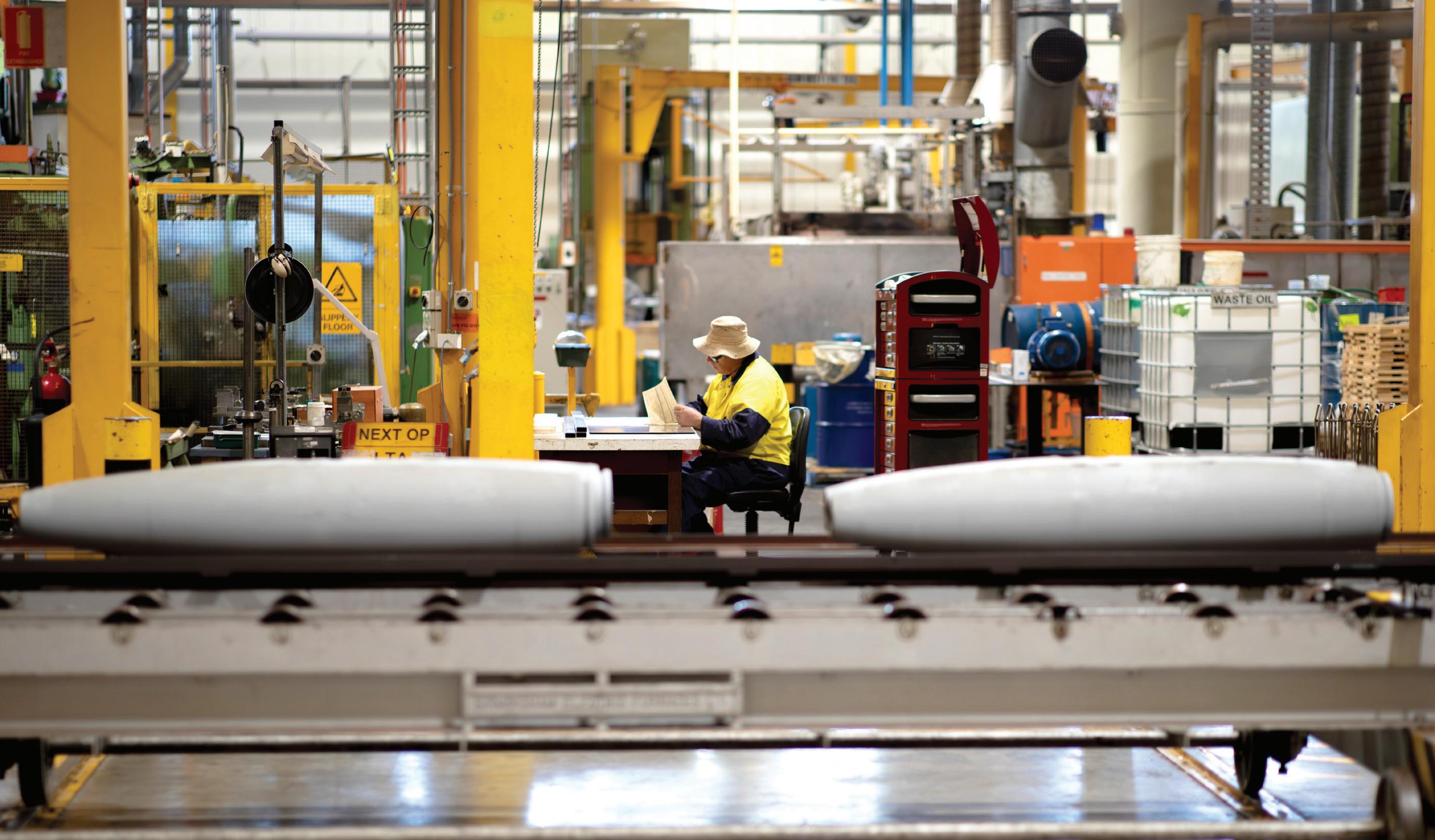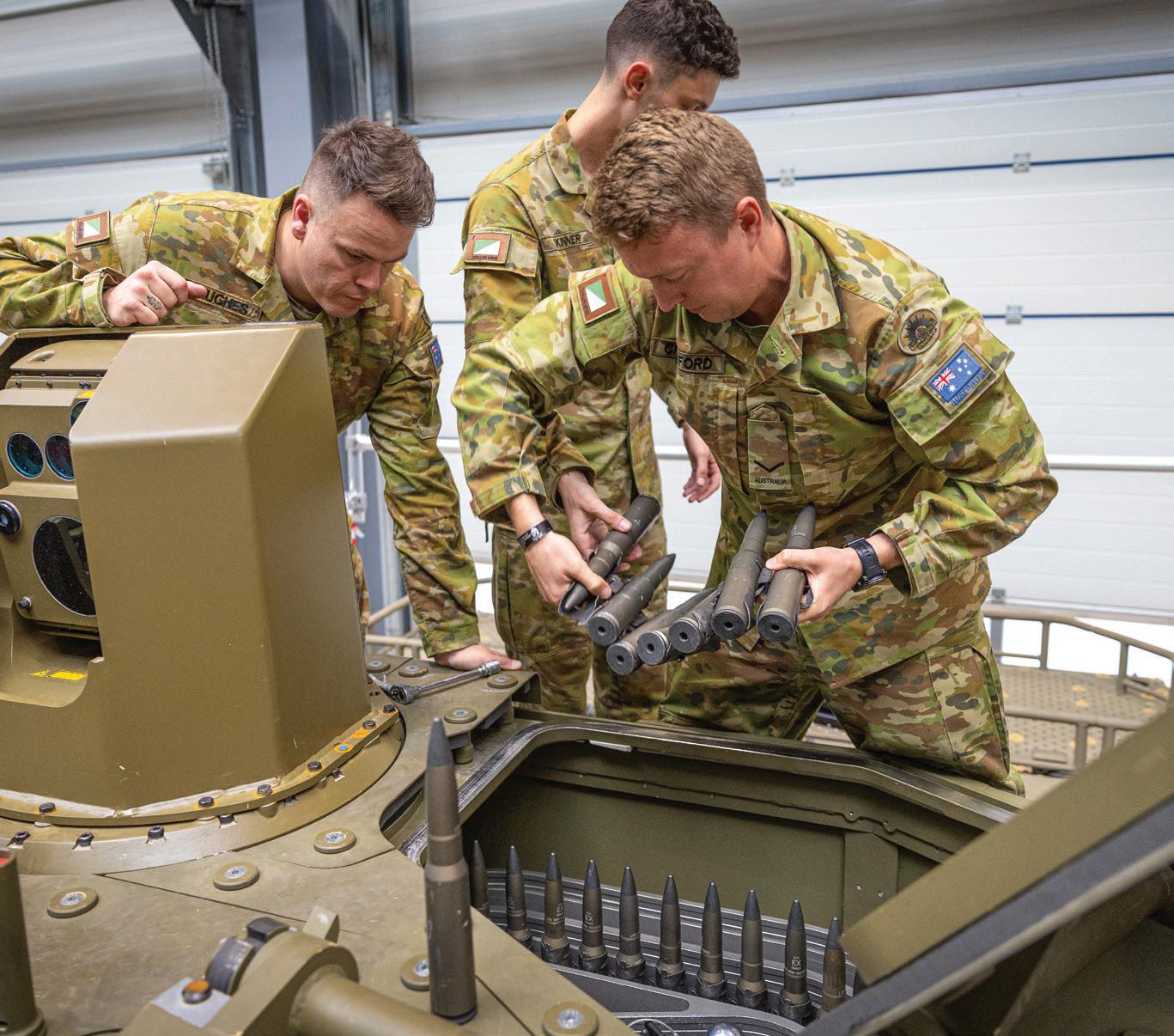
4 minute read
Industry Benefits From Land Transformation
The past 12 months has been a period of great change – and uncertainty – for companies that support the Australian Army.
However, on the eve of the Land Forces International Land Defence Exposition, there are growing signs that promises are being replaced with action for an increased pipeline of land-focused work for Australian defence industry. A few examples include:
• The Federal government has committed to manufacturing GMLRS missiles in Australia by 2025.
• It has fast-tracked the build of Army’s Landing Craft Medium in Western Australia, bringing first delivery forward by seven years.
• Redback infantry fighting vehicles will be built in Australia with the government claiming all 129 new vehicles will be delivered “by the time the first vehicle would have been delivered under the former government’s plan”.
• And it points to the deal to supply the German Army with Australian-made Boxer Heavy Weapon Carrier vehicles, the single largest defence export agreement in Australian history.
The focus, as outlined late last year by the Chief of Army, is transforming to be “optimised for littoral manoeuvre operations by the sea, land and air from Australia” as part of the integrated force.
“We must therefore adapt… We cannot do this alone. It is a team effort,” said Lieutenant General, Simon Stuart.
AUKUS Benefits
The benefits of AUKUS extend well beyond maritime and into land capabilities as Army pursues a long-range land and maritime strike capability.
..we stand on the cusp of an era of immense opportunity for small to medium businesses to grow their share of the Defence dollar. Truly awesome opportunities lie ahead...
“… we look to be far more proactive in promoting the integration of Australian industry into global supply chains,” said the Minister for Defence Industry, Pat Conroy.
“And that means we stand on the cusp of an era of immense opportunity for small to medium businesses to grow their share of the Defence dollar.
“Truly awesome opportunities lie ahead as we implement our AUKUS trilateral partnership.”
He said government is bringing “a laser-focus to sustaining the defence industry we have and growing the industrial base we need, much faster than we have before”.
Assisting this is the Defence Trade Controls Amendment Act 2024 (DTC Act), passed in March this year, that would support local industry by unlocking defence trade, innovation and collaboration with AUKUS partners.
But not all agree, including critics such as Bec Shrimpton, Director Defence Strategy and National Security at the Australian Strategic Policy Institute.
“Australian Strategic Policy Institute’s latest Cost of Defence report finds, the rhetorical urgency is not being matched by action in the form of defence investment,” she wrote in The Canberra Times earlier this year.
“The May budget is the latest demonstration of this mismatch, lacking spending for swift increases in capabilities that the Australian Defence Force would need if our region were to deteriorate quickly.
“The budget does not fund necessary lines to build preparedness. There is almost no money going into capability that will be delivered in the forward estimates, and little to offer Australian industry in sustainment either in the coming years. This will see even more of the industry go offshore, pivot away from defence or go under.
“This budget risks entrenching mistakes of the past and failing to learn lessons from what is happening in the world right now. It does not make necessary decisions or investments but delays them. Meaningful spending, genuine reform of project management, new and more agile approaches to contracting and investment in research and development, are all necessary to get off the path we are on, which has hollowed out existing capability and puts preparedness at risk as we head into an increasingly dangerous time.
The Government’s response is that the 2024 Integrated Investment Program involves “a complete rebuild of Defence’s capability procurement plan” and that it is accelerating critical capabilities “in a practical and affordable way”.
Together, the National Defence Strategy and Integrated Investment Program will ensure the Australian Defence Force has the capabilities, systems, structures and people to respond to threats, contribute to the stability of our region and keep Australians safe.
The Minister for Defence Industry, Pat Conroy, said the Integrated Investment Plan deliberately reshapes the ADF’s acquisition program to ensure it has the critical capabilities needed for the next decade and beyond, backed by a record investment in defence capability.











